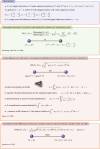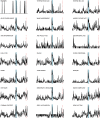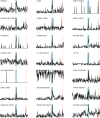Metric projection for dynamic multiplex networks
- PMID: 27626089
- PMCID: PMC5011148
- DOI: 10.1016/j.heliyon.2016.e00136
Metric projection for dynamic multiplex networks
Abstract
Evolving multiplex networks are a powerful model for representing the dynamics along time of different phenomena, such as social networks, power grids, biological pathways. However, exploring the structure of the multiplex network time series is still an open problem. Here we propose a two-step strategy to tackle this problem based on the concept of distance (metric) between networks. Given a multiplex graph, first a network of networks is built for each time step, and then a real valued time series is obtained by the sequence of (simple) networks by evaluating the distance from the first element of the series. The effectiveness of this approach in detecting the occurring changes along the original time series is shown on a synthetic example first, and then on the Gulf dataset of political events.
Keywords: Applied mathematics; Computational mathematics; Computer science; Information science.
Figures



















Similar articles
-
Pre-emptive spectral graph protection strategies on multiplex social networks.Appl Netw Sci. 2018;3(1):5. doi: 10.1007/s41109-018-0061-8. Epub 2018 Apr 11. Appl Netw Sci. 2018. PMID: 30839797 Free PMC article.
-
Composed solutions of synchronized patterns in multiplex networks of Kuramoto oscillators.Chaos. 2023 Oct 1;33(10):103128. doi: 10.1063/5.0161399. Chaos. 2023. PMID: 37844292
-
Reconstruction of multiplex networks via graph embeddings.Phys Rev E. 2024 Feb;109(2-1):024313. doi: 10.1103/PhysRevE.109.024313. Phys Rev E. 2024. PMID: 38491583
-
Characterizing dissimilarity of weighted networks.Sci Rep. 2021 Mar 11;11(1):5768. doi: 10.1038/s41598-021-85175-9. Sci Rep. 2021. PMID: 33707620 Free PMC article.
-
Visibility graph for time series prediction and image classification: a review.Nonlinear Dyn. 2022;110(4):2979-2999. doi: 10.1007/s11071-022-08002-4. Epub 2022 Oct 31. Nonlinear Dyn. 2022. PMID: 36339319 Free PMC article. Review.
References
-
- De Domenico M., Solé-Ribalta A., Cozzo E., Kivelä M., Moreno Y., Porter M.A., Gómez S., Arenas A. Mathematical formulation of multilayer networks. Phys. Rev. X. 2013;3
-
- Kivelä M., Arenas A., Barthelemy M., Gleeson J.P., Moreno Y., Porter M.A. Multilayer networks. J. Complex Netw. 2014;2(3):203–271.
-
- Weiyi L., Lingli C., Guangmin H. Mining essential relationships under multiplex networks. 2015. arXiv:1511.09134
LinkOut - more resources
Full Text Sources
Other Literature Sources

